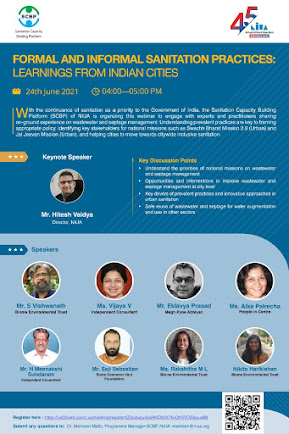Sanitation Safety Plan(SSP) is a Manual developed by WHO, is a step-by-step risk based approach to assist in the implementation of local level risk assessment and management for the sanitation service chain - from containment, conveyance, treatment and end use of disposal.
To have a deeper understanding of SSP, on June 2, 2021 Avinash Krishnamurthy gave a presentation explaining what is SSP, its methodology, assessment and also discussed about Devanahalli's SSP example. It is a 50 minutes presentation including QnA session.
- Here is the link to the Power point presentation.
- Here is the link to the document on Devanahalli's SSP trial
- Here is the link to listen to the presentation.
-Rakshitha M L



















